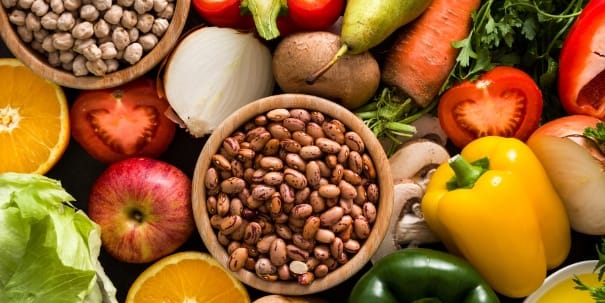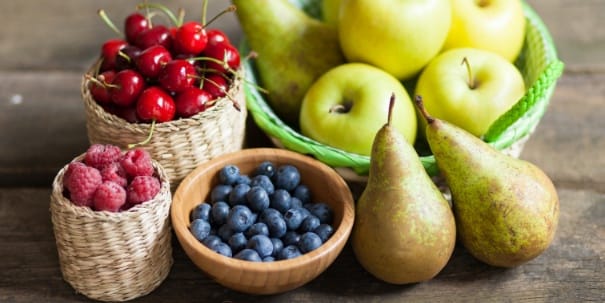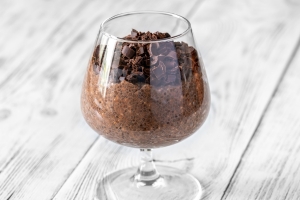Imagine a life where every food choice feels like a gamble, where a seemingly innocent snack could send your blood sugar soaring. This is the reality for millions living with type 2 diabetes. But what if I told you it doesn’t have to be this way? What if you could enjoy delicious meals without the constant worry, and even indulge in your favorite treats occasionally?
Living with type 2 diabetes doesn’t mean resigning yourself to a life of bland restrictions. While it requires careful consideration, a diabetes diagnosis doesn’t equate to a culinary death sentence. It’s about making informed choices and understanding how different foods affect your blood sugar levels. This knowledge empowers you to take control of your health and enjoy a vibrant and flavorful diet.
Understanding the Type 2 Diabetes Diet
The cornerstone of managing type 2 diabetes is maintaining healthy blood sugar levels. This involves understanding how different foods, particularly carbohydrates, influence your blood sugar. Carbohydrates are broken down into glucose, which enters your bloodstream and raises your blood sugar levels.
The key is to choose your carbohydrates wisely, focusing on those that offer sustained energy and essential nutrients, rather than those that cause rapid spikes. This is where the concept of the glycemic index (GI) comes in. The GI ranks foods based on how quickly they raise blood sugar levels. Low-GI foods release sugar gradually, providing a steady source of energy, while high-GI foods cause a rapid surge, which can be detrimental for people with diabetes.
But it’s not just about carbohydrates. A balanced diet for type 2 diabetes incorporates a variety of nutrients, including healthy fats and proteins. These play a crucial role in stabilizing blood sugar, promoting satiety, and supporting overall health.
The Best and Worst Choices by Food Group

Navigating the world of food with type 2 diabetes can feel like deciphering a complex code. Let’s break it down by food group, highlighting the best choices to embrace and the worst offenders to avoid or limit.
Protein Powerhouses

Protein is essential for building and repairing tissues, and it plays a crucial role in managing blood sugar levels. But not all protein sources are created equal.
The Best:
- Fish rich in omega-3 fatty acids: Salmon, tuna, and mackerel are excellent choices, offering heart-healthy fats and helping to reduce inflammation.
- Skinless poultry: Chicken and turkey are lean protein sources that can be easily incorporated into a variety of dishes.
- Beans and legumes: These plant-based powerhouses are packed with protein and fiber, contributing to stable blood sugar levels and digestive health.
- Tofu and tempeh: These versatile soy-based products offer a complete protein source for those following a vegetarian or vegan diet.
- Nuts and seeds: Almonds, walnuts, and flaxseeds are excellent sources of protein, healthy fats, and fiber, but remember to consume them in moderation due to their calorie content.
The Worst:
- Processed meats: Hot dogs, bacon, and deli meats are often high in sodium and saturated fat, increasing the risk of heart disease.
- Fatty cuts of meat: Choose lean cuts of meat and trim away visible fat before cooking.
- Fried protein sources: Avoid fried chicken, fish, and tofu, as frying adds unnecessary calories and unhealthy fats.
Carbohydrate Considerations

Carbohydrates are often demonized in the context of diabetes, but the truth is, they are an essential source of energy. The key is to choose wisely.
The Best:
- Whole grains: Brown rice, quinoa, and oats are excellent sources of fiber, which helps slow down the absorption of sugar into the bloodstream.
- Non-starchy vegetables: Broccoli, spinach, and peppers are low in carbohydrates and packed with vitamins and minerals.
- Legumes: Lentils, chickpeas, and black beans are high in fiber and protein, making them a great choice for blood sugar control.
The Worst:
- Refined grains: White bread, white rice, and sugary cereals are quickly digested, leading to rapid spikes in blood sugar.
- Sugary drinks: Soda, juice, and energy drinks are loaded with sugar and offer little nutritional value.
- Processed snacks: Cookies, cakes, and pastries are high in sugar and unhealthy fats, contributing to weight gain and blood sugar fluctuations.
Dairy Dilemmas

Dairy products can be part of a healthy diabetes diet, but it’s essential to make informed choices.
The Best:
- Plain, non-fat yogurt: A great source of protein and calcium, yogurt can be enjoyed with fresh fruit or a sprinkle of nuts for added flavor and nutrition.
- Low-fat or skim milk: Provides calcium and vitamin D without the excess fat and calories of whole milk.
- Cottage cheese: A versatile protein source that can be enjoyed as a snack or incorporated into meals.
The Worst:
- Full-fat dairy products: Whole milk, cream, and cheese are high in saturated fat, which can raise cholesterol levels.
- Flavored yogurt and milk: Often contain added sugars, contributing to unnecessary calorie intake and blood sugar spikes.
The Fruitful Truth

Fruits are often misunderstood in the context of diabetes. While they do contain natural sugars, they also offer a wealth of vitamins, minerals, and fiber.
The Best:
- Berries: Blueberries, strawberries, and raspberries are low in sugar and high in antioxidants.
- Apples: A good source of fiber, especially when eaten with the skin on.
- Citrus fruits: Oranges and grapefruits are packed with vitamin C and fiber.
The Worst:
- Dried fruits: While nutritious, dried fruits are concentrated in sugar and calories, so consume them in small portions.
- Fruit juice: Lacks the fiber of whole fruit and can contribute to blood sugar spikes.
- Canned fruit in syrup: Often packed in sugary syrup, opt for fruit canned in its own juice or water instead.
Fats and Their Function

Fats play a vital role in our bodies, but not all fats are created equal.
The Best:
- Unsaturated fats: Found in avocados, nuts, seeds, and olive oil, these fats can help improve cholesterol levels and heart health.
- Omega-3 fatty acids: Abundant in fatty fish like salmon and tuna, these fats have anti-inflammatory properties and support heart health.
The Worst:
- Saturated fats: Found in red meat, butter, and full-fat dairy products, these fats can raise cholesterol levels and increase the risk of heart disease.
- Trans fats: Found in processed foods and some fried foods, trans fats are detrimental to heart health and should be avoided.
A Delicious and Diabetes-Friendly Day

Now that we’ve explored the best and worst choices by food group, let’s put it all together and create a sample meal plan for a diabetes-friendly day.
- Breakfast: Oatmeal with berries and a sprinkle of nuts.
- Lunch: Salad with grilled chicken or tofu, a variety of non-starchy vegetables, and a light vinaigrette dressing.
- Dinner: Salmon baked with herbs and spices, served with a side of roasted vegetables and quinoa.
- Snacks: A handful of almonds, Greek yogurt with fruit, or vegetable sticks with hummus.
Remember, this is just a sample plan, and your individual needs may vary. It’s essential to work with a registered dietitian or certified diabetes educator to create a personalized meal plan that fits your lifestyle and preferences.
Beyond the Plate: Lifestyle Factors for Blood Sugar Control
While food choices play a crucial role in managing type 2 diabetes, they are only one piece of the puzzle. Other lifestyle factors also significantly impact blood sugar control.
The Power of Physical Activity

Regular exercise is a cornerstone of diabetes management. Physical activity helps your body use insulin more effectively, lowering blood sugar levels and improving overall health. Aim for at least 30 minutes of moderate-intensity exercise most days of the week. This could include brisk walking, cycling, swimming, or dancing.
Even small amounts of activity can make a difference. Take the stairs instead of the elevator, park farther away from the entrance, or take a short walk during your lunch break. Find activities you enjoy and make them a part of your routine.
Stress Management and Sleep

Stress can wreak havoc on blood sugar levels. When you’re stressed, your body releases hormones that can raise your blood sugar. Finding healthy ways to manage stress is crucial for diabetes control.
Consider techniques like meditation, yoga, deep breathing exercises, or spending time in nature. Prioritize sleep as well, as lack of sleep can also affect blood sugar regulation and increase insulin resistance.
Monitoring and Medication

Regularly monitoring your blood sugar levels is essential to track your progress and make necessary adjustments to your diet and lifestyle. Your doctor will advise you on how often to check your blood sugar and what your target range should be.
In addition to lifestyle changes, many people with type 2 diabetes require medication to manage their blood sugar levels. It’s crucial to take your medication as prescribed and to communicate any concerns or side effects to your doctor.
Navigating Social Situations and Special Occasions

Managing diabetes doesn’t mean you have to miss out on social gatherings and celebrations. With a little planning and mindful choices, you can enjoy these occasions while keeping your blood sugar in check.
- Plan ahead: If you’re going to a restaurant, look at the menu beforehand and choose a healthy option. If you’re attending a potluck, bring a diabetes-friendly dish to share.
- Don’t arrive hungry: Have a healthy snack before you go to avoid overeating.
- Be mindful of portions: Use smaller plates and bowls to help control your portions.
- Choose your indulgences wisely: If you want to have a treat, choose one and savor it mindfully.
- Stay active: If you’re at a party, get up and dance or take a walk around the room.
Remember, it’s okay to indulge occasionally. The key is to make conscious choices and not let special occasions derail your overall healthy eating plan.
The Importance of Support and Education

Living with type 2 diabetes can be challenging, but you don’t have to go it alone. Surround yourself with a supportive network of family and friends who understand your condition and encourage your healthy habits.
Consider joining a diabetes support group or seeking guidance from a certified diabetes educator. They can provide valuable information, resources, and emotional support.
Staying informed about your condition is crucial. Read books, articles, and reputable websites to learn more about diabetes management. Knowledge is power, and the more you understand about your condition, the better equipped you’ll be to manage it effectively.
A Journey of Empowerment
Living with type 2 diabetes is a journey, not a destination. It’s about making gradual, sustainable changes to your lifestyle that support your overall health and well-being.
Remember, you are not defined by your diagnosis. You are in control of your health. By making informed choices, staying active, and seeking support, you can live a full and vibrant life with type 2 diabetes.
This journey is about progress, not perfection. There will be days when you make choices that aren’t ideal. Don’t beat yourself up about it. Learn from your experiences and keep moving forward.
Embrace the challenge, celebrate your successes, and remember that you are capable of achieving your health goals. With knowledge, determination, and a positive attitude, you can thrive with type 2 diabetes.
Bookmark this comprehensive guide on managing type 2 diabetes through food and lifestyle! Share it on Pinterest to help others navigate healthy, balanced choices with confidence. 📌

Resources:
- The effect of dietary intervention on the incidence of type 2 diabetes.
- Dietary patterns and risk of type 2 diabetes: a systematic review and meta-analysis.
- The role of dietary fiber in the management of type 2 diabetes.
- The effect of exercise on glycemic control in type 2 diabetes.
- Stress management and blood sugar control in type 2 diabetes.
- The impact of sleep deprivation on insulin resistance and type 2 diabetes.
- A randomized controlled trial of a diabetes self-management education program.
- The effectiveness of diabetes support groups in improving patient outcomes.







8 Responses
Okay, so I get the whole ‘ditch the white bread’ thing, but seriously, life without a good cookie now and then? That’s just cruel! Also, is it just me, or does anyone else feel like they need a PhD in nutrition just to figure out what to eat? I swear, one minute avocados are good, the next they’re the devil’s fruit. I’m trying, I really am, but sometimes a girl just needs some comfort food. Is there any hope for a reformed sugar addict like me?
Amelia, I hear you! Believe me, I understand the cookie cravings. The good news is, you absolutely can have a cookie now and then! It’s all about moderation and making smart choices most of the time so that when you do indulge, it’s not sending your blood sugar into orbit. As for the avocado confusion, you’re not alone. Nutritional advice seems to change faster than fashion trends! The key is to focus on whole, unprocessed foods as much as possible, and don’t get too bogged down in the minutiae. And hey, there are tons of amazing “healthified” dessert recipes out there that use things like almond flour and natural sweeteners. We can swap some recipes if you like! There’s definitely hope for you, Brenda! Small changes over time can make a big difference. Keep up the good work!
This article is helpful, but it all feels so…restrictive. Like I’m being told what I can’t eat all the time. Plus, who has time to cook elaborate meals every day? I work full-time and have two kids – meal prep for me often involves the drive-thru. And don’t even get me started on ‘mindful eating.’ How am I supposed to be mindful when I’m inhaling my salad in between meetings? Is there a realistic way to make this work for busy people, or are we all just doomed?
Harper, you’re speaking for so many people! It’s true, this can feel overwhelming, especially with a busy schedule. But ‘restrictive’ is the last thing I want this to be. Think of it as ‘smart choices’ instead. And you’re right, elaborate meals aren’t always realistic. The good news is, healthy eating with diabetes doesn’t have to be complicated. Simple swaps can make a big difference – like choosing grilled chicken instead of fried at the drive-thru or grabbing a salad with grilled chicken if you’re pressed for time. As for mindful eating – haha, I know, it sounds a bit ‘woo-woo’ when you’re on the go! But even just taking a few deep breaths before you eat and paying attention to the taste and texture of your food (even if it’s just for a minute or two) can be beneficial. It’s about finding what works for you and your lifestyle. You’re definitely not doomed, Tiffany! Small steps are the key. Maybe start with one meal a day or even one snack a day where you consciously make a healthier choice. You’ve got this!
Wow, this article is comprehensive, but also a little overwhelming! I’ve been trying to get my blood sugar under control, but honestly, it feels like a full-time job. They say to avoid processed snacks, but sometimes a girl just needs a cookie, you know? Is there any room for a little indulgence, or do I have to say goodbye to all my favorite treats forever? Also, I hate fish. Can I still get enough omega 3 with my other foods? I appreciate all this info, but it would be nice to see a little more about how to make this sustainable in the real world.
Ashley, I hear you! It definitely can feel like a lot to take in. You’re totally right, it’s about finding balance. You don’t have to banish all treats forever. The key is moderation and mindful indulgence. Maybe choose a smaller portion of your favorite cookie, or pair it with a handful of nuts to help balance out the sugar. As for the fish, if you hate it, don’t force yourself! You can get omega-3s from other sources like flaxseeds, chia seeds, and walnuts. Maybe try sprinkling some ground flaxseed on your oatmeal or adding chia seeds to a smoothie. The “real world” part is the most important. It’s about finding what works for YOU and making small, sustainable changes over time. Keep experimenting, and don’t be afraid to ask for help from a dietitian or diabetes educator if you need more personalized guidance!
Okay, I laughed out loud at ‘Dairy Dilemmas.’ So true! I love cheese, but I know it’s not the best for me. Are there any lower-fat cheeses that are actually, you know, edible? Also, this article mentions stress a few times. Like, duh, life is stressful! Are there any practical tips for managing stress that don’t involve meditating on a mountaintop for hours? I have a job and kids, I don’t have time for all that!
Jennifer, I’m glad you got a chuckle out of that! Cheese can be a tough one. There are definitely some decent lower-fat options. Look for part-skim mozzarella, feta (in moderation), or even some of the lighter versions of your favorite cheeses. They might not be exactly the same, but they can still satisfy that cheesy craving. And yes, stress! Who has time to become a Zen master when you’re juggling work and kids? Practical tips are key. Try taking a few deep breaths throughout the day, even if it’s just for a minute or two. Listening to calming music, taking a quick walk outside, or even just laughing with your kids can help. Even five minutes of mindful movement like stretching or a quick yoga video can make a difference. The important thing is to find small, manageable things that you can actually incorporate into your busy day. Small moments of stress relief add up!